The SIG Sauer Academy’s Bullets and Bandages class is one of their crossover courses intended to give participants training in more than one specialty. It was developed and is currently taught by Kerry “Pocket Doc” Davis of Dark Angel Medical and is based on his popular two-day Tactical Aid Course. Both courses share the same curriculum for the first two days, but Bullets and Bandages adds a live fire component on the third day which enables the students to appreciate the difference it makes when attempting to perform trauma care in a live fire environment . . .
Kerry Davis spent 10 years on active duty and 5 years on reserve duty in the USAF as a combat medic/flight medic-airborne/instructor and was deployed to several locations in the Middle East as well as numerous other locations worldwide with the US and foreign militaries. Upon separation from the military, he worked as a civilian paramedic while obtaining his licensure as a registered nurse. Since leaving the military in 2007, he has focused his career on critical care and emergency medicine.
Day one of the class began with a survey of topics that would frame later lessons. Students learned about the ethics and legality of the administration of care, how to make triage decisions through the lens of the warrior mindset. We discussed the body alarm response which controls how your body is going to react while under stress. It’s critical to understand your own personal body alarm response because it’s bad enough when you have to perform emergency care OR you have someone shooting at you. Combine the two and you’re really looking at a day in hell if you’re not properly prepared. It’s important to remember that when you’re under stress, you are going to sink to the level of your training. So if administration of basic care is not something that has been practiced to the level of second nature, things are likely going to fall apart fast.
Since this is a tactical medicine class, the next topics discussed included scene assessment and situational awareness. One can’t just assume that a scene is safe – it has to be made safe before care can begin. Granted, for most people, the need to administer care while under fire isn’t likely to be an issue, but in the much more common instance of an auto accident, you still have to be aware of possible hazards such as leaking fuel, oncoming traffic or fire. Students are taught that before care can be administered, they need to assess the relative danger of treating in place or moving patients to a safer location. If the danger involves incoming small arms fire, that threat must be dealt with first.
The next topic was an overview of the patient assessment process. The areas of focus are:
- Hemorrhage
- Airway
- Breathing
- Circulation
- “Da Brain”
- Exposure
The fifth item on the list may appear silly, but Kerry was trying to keep things easy to remember by using alphabetical order. Brain function is important, but in terms of critical triage care order, not as important as breathing, so it needs to come in the fifth position. The list is ordered based on how quickly a problem in a particular area is going to lead to death. Some people wonder why airway and breathing are two different things. It’s because there is a subtle difference between them. Breathing depends on the airway – if there is no airway, then there can be no breathing, thus a first responder must ensure a proper airway exists before they can move on to the breathing assessment.
Each of the five areas is then looked into in detail. Students are advised to use their hands to conduct a full-body blood sweep including checking for wounds under the body. Since major blood loss will kill faster than any of the other issues, wounds that result in significant blood loss must be identified and dealt with the quickest. The human body holds approximately five liters of blood and can lose up to 750 ml or so of blood and still have a 92% chance of recovery. Lose more and you risk slipping into Stage II shock with an attendant survival rate of 40% or less. In a study of combat wounds, about 80% of deaths are attributable to blood loss. This is why hemorrhage is the most critical area and the one that is examined first. Less important in terms of immediacy, but something to be dealt with quickly nonetheless are Airway and Breathing. Discussion focused on some of the various traumas that can impact these systems along with what options are available for addressing them. The overview section wrapped up with coverage of circulation issues, brain injury, and the risk of exposure.
With the background information out of the way, the lecture turned to specific treatment practices. Following the road map outlined earlier, the course began with Hemorrhagic injuries. Discussion and demonstration of Tourniquets, wound packing, direct pressure, pressure dressings, and hemostatic agents were covered. Airway was next and Kerry presented on methods to open airways (while being aware of possible spinal injury), recovery position, artificial airways, and surgical airways. This last item was informational only as this course certainly does not teach participants to perform surgical airway insertion.
Breathing issues was the next topic and began with basic mouth to mouth resuscitation employing approved barrier devices. Next up was occlusive dressings for dealing with impalement injuries to the thorax otherwise known as sucking chest wounds. A discussion of chest injury remedies would not have been complete without mention of needle decompressions, but as with surgical airways, students are not qualified to perform that sort of procedure unless they have received formal training elsewhere and are operating under medical supervision.
As the focus on injury moves from external treatments to internal problems, the range of things that a first responder can do narrows. With respect to circulatory care, we are limited to monitoring for shock and if the victim is conscious, helping them to keep hydrated with electrolyte solutions. “Da Brain” is covered in a few slides and primarily centers on gauging a patient’s mental state based upon actions and speech. If a patient’s eyes are open, their pupils can provide a good deal of information on brain state. Pupils of unequal size, slow reaction to bright light, and/or unusual dilation are warning signs of possible head trauma. Kerry also reminded the students that situational awareness can play a role in identifying potential injuries that may be otherwise hidden. A patient found several feet from his crashed car could indicate a possible violent ejection and a sizeable dent in a door panel or dashboard within the plane that the head could move also might suggest a head injury.
The next section focuses on the med kit. In the interest of brevity, this chapter focuses on the design of the Direct Action Response Kit (D.A.R.K.) that Kerry developed. I recently reviewed that kit here. Go back and read my review of the kit as it covers much of the information that is contained in this section of the class. BTW: Should you be interested in acquiring your own D.A.R.K., there is a coupon code good for 10% off Dark Angel Medical products until September 30, 2013 at the end of that review.
The class then turns to some of the more minor injuries that one might encounter. First up are skin injuries such as lacerations, avulsions, contusions, and abrasions. Definitions are given for each of these injuries along with recommended treatment steps. Following that, the course goes into environmental injuries including animal and insect bites along with temperature based injuries; both hot and cold. As with the skin injuries, students are taught how to recognize these problems and how to treat them.
The next topic area moves from minor to traumatic. Since the course is called “Bullets and Bandages”, time needs to be spent on treating various types of gunshot wounds. The course material is chock full of nice pictures of exit and entry wounds and Davis discusses how to look for wounds (some can be very difficult to see) as well as how to address them when found. From gunshot wounds, the discussion moves to stab/impalement wounds, blast injuries, and fractures. Torso problems are next with flail chest injuries and sucking chest wounds covered moving onto tension pneumothorax which is caused by air leaking into the chest cavity due to a torso wound that eventually creates enough pressure to squeeze the organs of the chest. It generally takes 1-2 hours to develop and is 100% fatal if not addressed.
Critical injuries to the airway are next and if you’ve ever heard the term, “I’m going to blow your face off,” the course book has a nice full color picture showing exactly what this looks like. To paint the picture for you, think Dr. Zoidberg. This section then touches on evisceration and wraps up with a discussion of shock. What it is, what causes it, and what sort of treatment options are available to deal with it.
The final sections of the classroom discuss moving victims out of harm’s way while under fire and cover various options for moving a victim depending on how many helpers you have and your size relative to the victim’s. Weapons placement is considered to ensure that you have a gun that is both available for immediate action, but is not pointing at your victim’s head or other body part while you are transporting them to safety. Cover versus concealment is addressed as is a model for setting up a triage center in the event of a mass casualty event such as, oh, say, a bombing at a famous foot race.
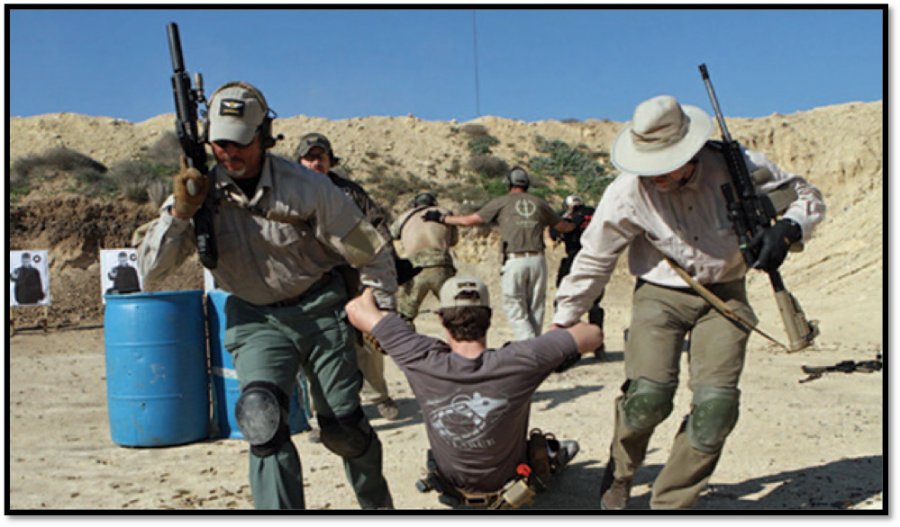 With the classroom sections complete, the instruction turns to hands on exercises with the various components of the D.A.R.K. as well as some other tools. In addition to the CAT tourniquet included in the D.A.R.K., Kerry has examples of the SWAT-T (basically a piece of tire inner tube), the NATO tourniquet (compact and effective, but not intuitive), the Special Operations Forces Tactical Tourniquet (easy to put on a limb, but can be a problem to operate one handed if the clip comes undone), and basic field expedient tourniquets (large bandage and a stick to twist it with). Several versions of pressure bandages are provided including the Israeli, OLAES, and your basic Ace type bandage. A dummy’s head is set up so that students have the chance to practice inserting nasal airways, and a dummy torso is present sporting a gunshot wound with entry and exit holes so that students can try their hand at wound packing. Students take turns applying these various remedies to dummies, each other, and themselves although fortunately, no one is required to practice the nasal airway on another person.
With the classroom sections complete, the instruction turns to hands on exercises with the various components of the D.A.R.K. as well as some other tools. In addition to the CAT tourniquet included in the D.A.R.K., Kerry has examples of the SWAT-T (basically a piece of tire inner tube), the NATO tourniquet (compact and effective, but not intuitive), the Special Operations Forces Tactical Tourniquet (easy to put on a limb, but can be a problem to operate one handed if the clip comes undone), and basic field expedient tourniquets (large bandage and a stick to twist it with). Several versions of pressure bandages are provided including the Israeli, OLAES, and your basic Ace type bandage. A dummy’s head is set up so that students have the chance to practice inserting nasal airways, and a dummy torso is present sporting a gunshot wound with entry and exit holes so that students can try their hand at wound packing. Students take turns applying these various remedies to dummies, each other, and themselves although fortunately, no one is required to practice the nasal airway on another person.
Day three is the range day. Normally the object at the end will be an exercise that ties everything together – rescue a dummy while “under fire”, moving him off the “X” and administering first aid when safe to do so. The “under fire” portion is imagined. Students will be firing at paper targets but no one is actually shooting back (although this will change in the forthcoming Bullets & Bandages II class which will feature Force on Force, but I digress).
It is important to walk before one runs and Kerry needs to assess the ability levels of the students before adding complications like tourniquet application to the shooting , so like most Sig Sauer courses, this one begins with a progression of basic shooting exercises using the pistol at various distances. One handed shooting is then reviewed and exercises test the student’s ability to reload and rack the gun one handed using both support and dominant hands. Partitions are then added for cover and students begin shooting. Suddenly a whistle sounds and this tells participants that they have just taken a round in their support hand and are starting to bleed out. The student must fire a couple more rounds of suppressing fire, get behind cover, safely ground their pistol, apply a tourniquet to the injured arm, pick the gun up and get back into the fight. This drill is repeated with the dominant arm being wounded, so the pistol must first be transitioned to the support hand, then cover sought, tourniquet applied, and the gun returned to the fight.
Following lunch, we got to do it all over again, but this time with our rifles.
If you have never had to lever a rifle up one handed, you don’t know what you are missing.
I thought I would be okay with my Sig Sauer 556 SBR, but let me tell you, that rifle was heavy to bring on target one handed, especially after a full morning of shooting exercises on a hot and somewhat humid day. One of the students really regretted bringing his full size AR-15 with a 20” barrel. The exercise was quite valuable in that I swiftly learned that my 2 point sling setup did not permit me to transfer the rifle from dominant to support hand as easily as I would have liked, so upon my return home that was replaced with a single point sling.
As noted earlier, while the final exercise would normally have involved dragging a 190 lb. dummy out of the line of fire, getting it patched up using our kits, and then returning fire on the bad guys, we found out that morning that the Academy’s dummy had succumbed to a massive mold infection and had not yet been replaced. It really didn’t break our hearts all that much as by that point, we were all hot, tired, and cranky and just as happy to call it a day.
The Tactical Medicine portion of the course alone would have been worth the price of admission and if you don’t live near a place where Sig Sauer Academy offers the Bullets & Bandages course, it’s definitely worth going to. The first two days of the B&B course and Dark Angel’s Tactical Medicine course are pretty much the same, but with a different logo on the slides. I would highly recommend either one. If however, you can get to the Sig Sauer Academy version, it is very much worth the extra money and time. The third day where you put the shooting and the medicine together really starts you thinking tactically. Being able to shoot and/or deal with wounds with either hand is something you think about a lot and actually doing these exercises helps you evaluate of everything on your kit is where you want it to be. The course also touches on the use of cover and concealment so that you reduce the chances of needing self-application of medical treatment in the first place.
As with every single other course that I have taken at the Sig Sauer Academy, the content is well presented and thoroughly covers the topic. With only one day on the range, you certainly won’t leave as an expert at battlefield medicine under fire, but you will have a clear road map to follow in developing your ability to provide care to yourself or another person in a stressful and dangerous situation.
Note: Special Thanks to Matt Stagliano who took most of the pictures used in the post and generously gave me permission to use them. You can check Matt’s work out at https://www.facebook.com/mattstag

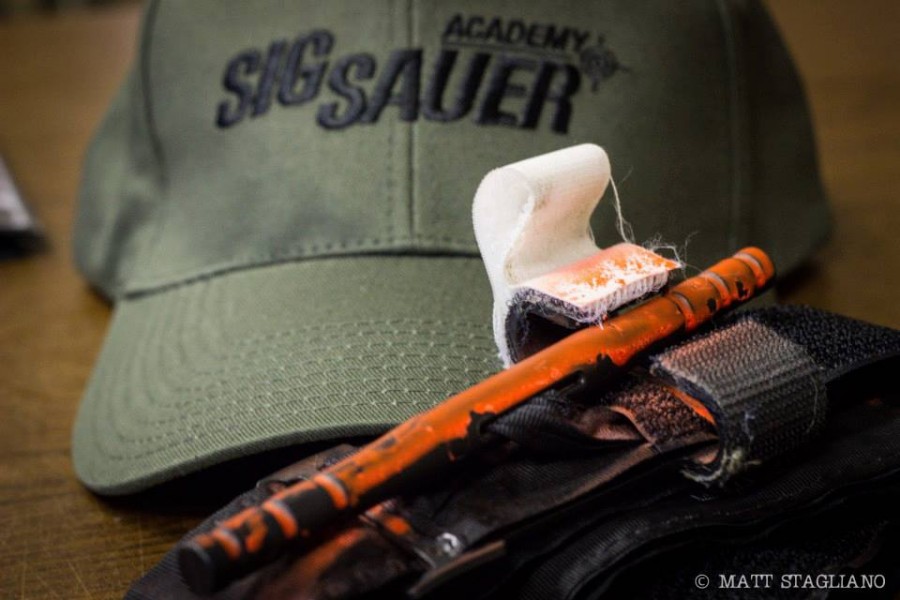


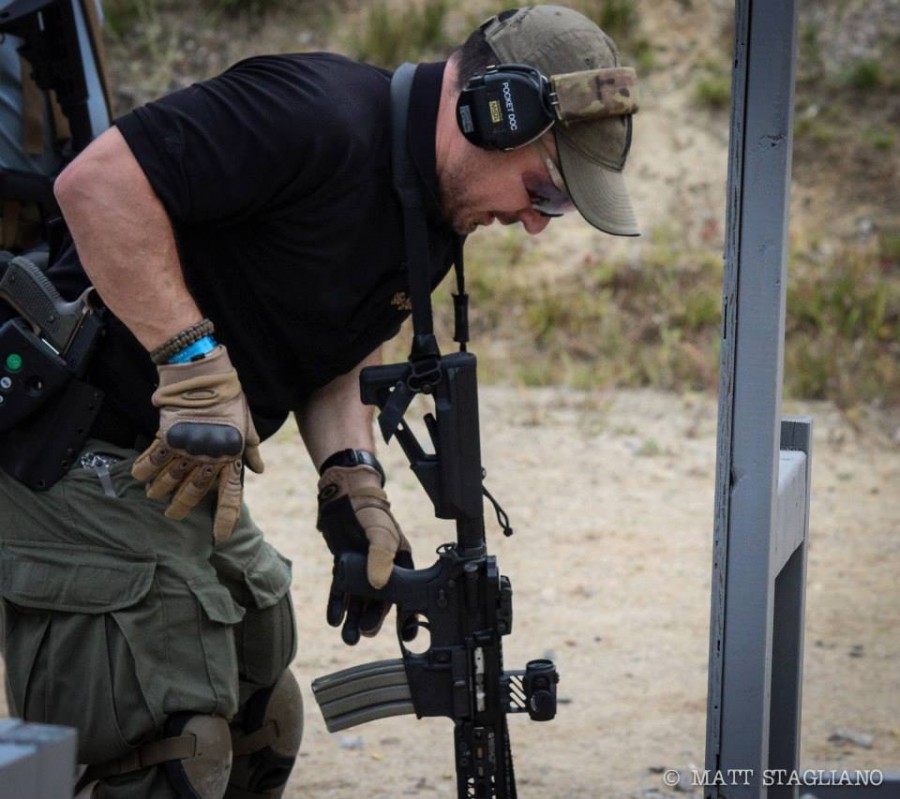
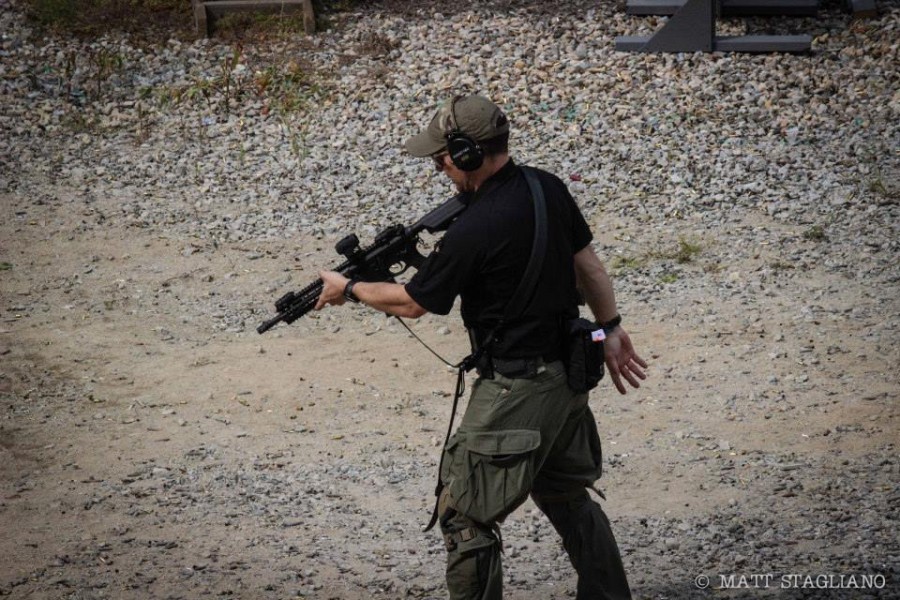

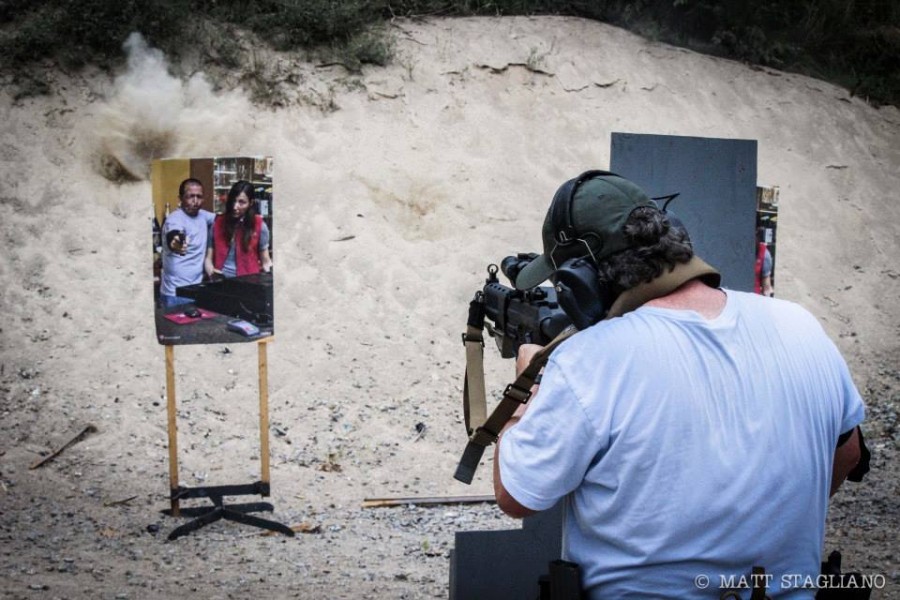



Meh
This is excellent stuff, people should get trauma care training wherever possible. Working the gunfight into it is even better. Just because your average DGU doesn’t involve a running gun battle with rifles doesn’t mean it can’t involve a serious injury. And if you think the (hopefully) few minutes waiting for police is bad, remember that the medics usually won’t go in until police declare the scene safe. This could be anywhere from a few more minutes to an hour.
I disagree, there is so much information to chew through in an introduction trauma medicine class that to waste an entire day doing rifle drills (without in prereqs on their site so the level of ability will be varied) just doesn’t make sense. IMO you are better off doing more scenarios, perhaps bringing in moulage kits.
Leave the one handed shooting and shooter down drills for a tactical rifle class.
I agree with PPGMD. I guess the question to ask would be whether or not the one day of shooting it worth the additional money? Would you pay soley for that one day of instruction?
Is it worth money for one day of shooting instruction? Um, yeah. That’s why there are a lot of one day classes. If you read the course pre-req, it is for intermediate level students, so its not for someone with no gun handling skills. I certainly valued the extra cost for the extra day. Kerry knows a lot about shooting and its good to be exposed to as many instructors and methods as one can. I learn something new in every single class I go to.
Plus, I had never done things like tourniquet drills while “under fire” You don’t get that in normal shooting classes and it really made me question some of my equipment selection and location choices and made me a better shooter. You really don’t want to be figuring out life saving drills when your ass is on the line.
Plus, many people don’t have access to tactical shooting ranges on a regular basis. For many folks, square range is all they have, so every opportunity to practice moving and shooting along with barricade work and multiple shooting positions is a good thing.
“Plus, I had never done things like tourniquet drills while “under fire” You don’t get that in normal shooting classes and it really made me question some of my equipment selection and location choices and made me a better shooter. You really don’t want to be figuring out life saving drills when your ass is on the line.”
Because everyone wears battlebelts everywhere they go. Anyways yes there are instructors that do TQ drills during a tactical rifle class. Of course these are only with the instructors/schools that have a long standing history of having a quality medical program for shooters.
As someone that has done that shooter’s tactical medicine class, I pick my two to three day refresher classes by what doesn’t have a live fire component. I am not military or LE, I am not going to be doing any buddy drags under fire.
In fact in a couple of months I am going to be doing a refresher. This instructor offers two different classes one with live, and one without. The one without goes into important things like C-spine with other common MVA injuries, packaging for air transport (including bringing an EMS helicopter for practice), and other things not commonly covered.
I guess you do a lot of helo ops too then?
I thought this was a great article and living so close to NH I will put it on my list of classes to take. I think everyone should look at courses but also take into consideration “how does it apply to me and/or my career?” In addition, people should not just get CPR certified and stop there. Go out and get trauma training or even your EMT. I’ll bet that the Bullets & Bandaids class will come together better if you have that knowledge. I am a FF/EMT and I CCW daily, yet for a while I overlooked my own medical training/experience in regards to self defense. Now I carry a DARK all the time, plus have an addition IFAK in my EDC/bugout bag, and then a full EMS trauma bag in my car. I welcome any opportunity to train under stress, because that’s where we learn best and can make mistakes we can live with. Again, great write up!
Comments are closed.